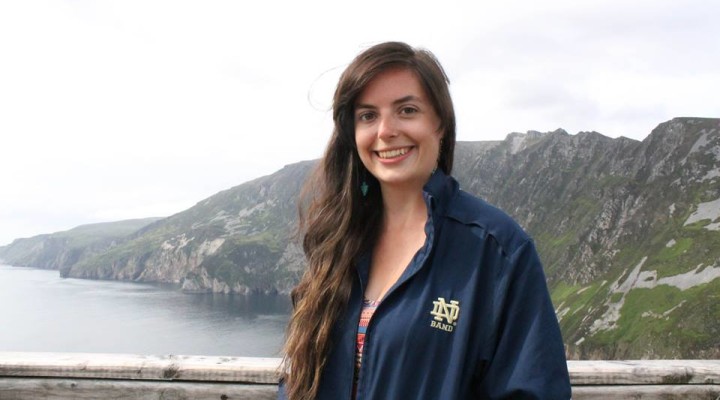Rae Moors, an incoming senior at the University of Notre Dame, has had quite an
eventful summer. To gather information for her Irish Language and Literature thesis and
Art Studio exhibit, Moors travelled to Dublin and Galway to research Irish folklore and the
way that characters, stories and cultural heritage is celebrated in the telling of these stories.
Moors started off her travels exploring the National Folklore Archives in Dublin,
focusing on stories from county Galway, a western county. “They have over 2 million pages
of manuscript folklore and the public is free to come to University College Dublin and use
them,” explains Moors, “So the first week I spent in the archives taking notes on as many
fairy stories as I could.”
For the next two weeks, Moors travelled to different locations in Galway to get
a take on the locations of the various stories. She visited several small villages and folk
museums, but also sought out the specific bridges or “fairy forts” featured in the stories to
evaluate her own experience with them. “It was a very hands-on adventure,” Moors stated.
“I am extremely interested in the way many parts of Ireland today hold onto
remnants of the past, whether through their names or famous locations with names
attached to them,” says Moors, “It helps us piece together not only history but the exact way
in which present day culture was crafted from past culture.”
Moors was successful in finding that folklore tends to be a way that people use
to record the happenings in any particular time period. People would have folktales and
slowly change them over time to be more relevant as they were passed on through families,
and through this the development of ideas can be seen over time.
“I noticed a lot of importance placed on location in the folktales, and this is another
way to sort of ‘track’ the tale. Folklore is filled with physical description, so part of my
research was seeking out these places that would have had stories written about them,”
states Moors. She noted that liminal and boundary locations, such as walls or bridges, are
often featured in Irish folklore. These spaces were seen as an in-between or limbo area,
which is a prominent idea throughout history as a portal as time progresses.
To fund her research, Moors received two grants from Notre Dame. First, she
received a Nanovic Summer Research Grant, through the Nanovic Institute for European
Studies that funds many projects throughout the year pertaining to any European studies
topic. The second grant was the Genevieve D. Willis Gender Studies Research Grant,
through the Gender Studies Department. “Luckily my interests fall well within those two
departments so given my budget, both were available,” Moors explained.
Although she had a few contacts in Dublin from working with the Folklore Archives
in the past who gave her advice to find the right avenues of research, most of her research
was done independently. “I met with various people I know from other places who worked
in heritage industries for advice as well. But it was just that: advice,” says Moors, “It was still
extremely helpful. Navigating a country on your own while trying to accomplish a laundry
list of things can be very daunting. I certainly didn’t manage it perfectly.”
Moors plans to use her findings to write a thesis on the importance of physical
description and location of female characters in Irish folklore. She also would like to
experiment with the retelling of these stories in the form of an illustrated book, to see if she
can “recreate the experience of transmitting the stories to a new audience.”
- Alicia Czarnecki



















